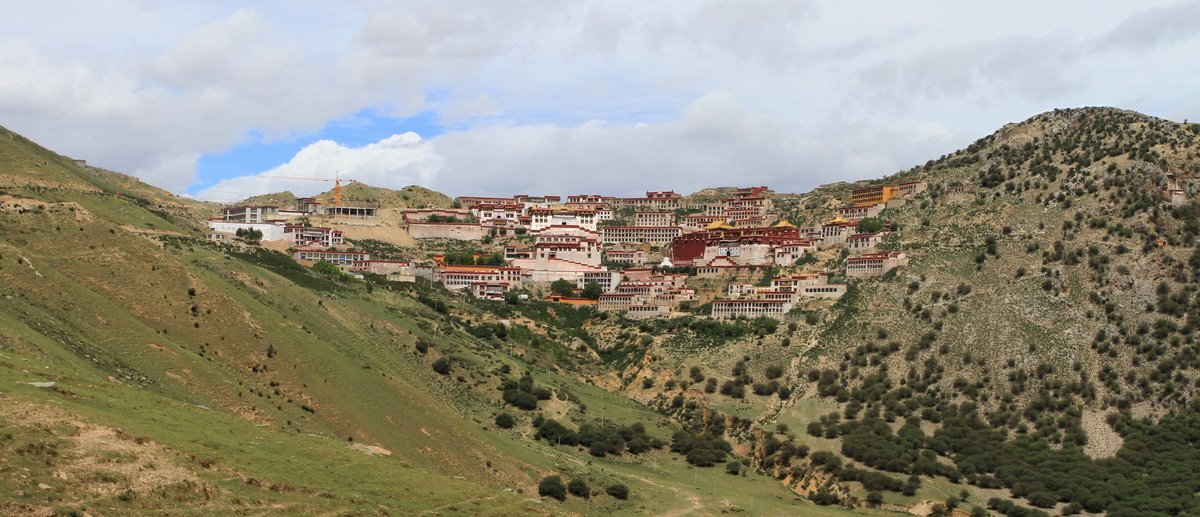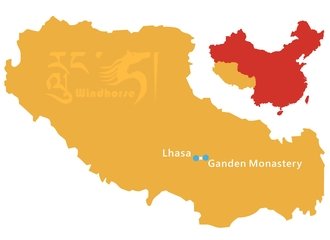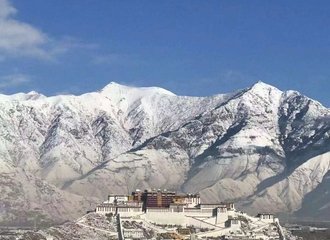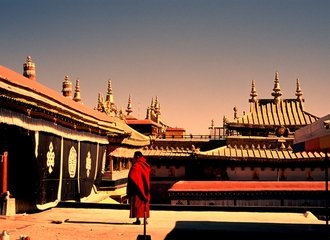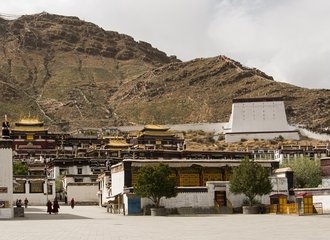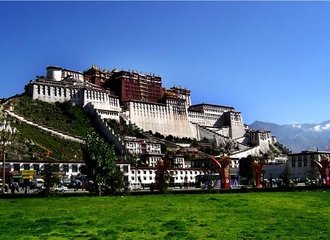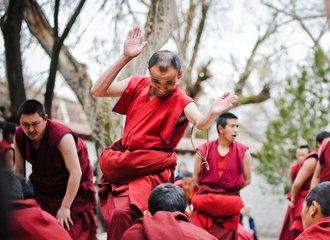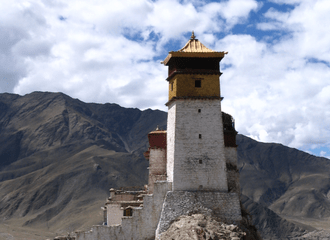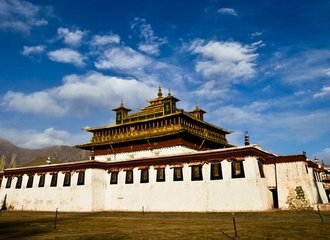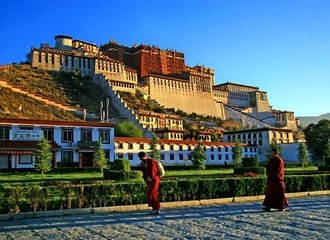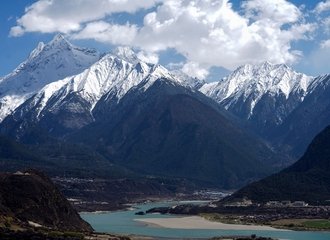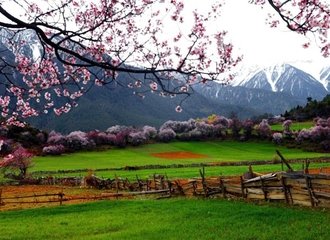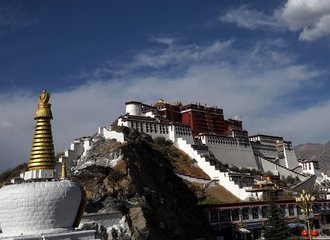Tibet Autonomous Region vs. the Tibetan Area
Traveling to Tibet is a dream destination for many travelers, enticed not only by its mysterious religions and unique culture but also by the breathtaking and exotic scenery found on the "roof of the world." However, the question arises: Where exactly is Tibet? When people discuss Tibet, they typically refer to the Tibetan Autonomous Region (T.A.R.), which is a province of the People's Republic of China. However, for the local Tibetan people, Tibet encompasses a much larger area, encompassing the entire Tibetan Plateau, where the Tibetan people have their ancestral roots. In this article, we will delve into the key differences between the TAR and Tibetan areas, exploring their cultural nuances, geographical features, and travel considerations.
Table of Contents

1. Where is Tibet Autonomous Region (T.A.R)?
The Tibet Autonomous Region (T.A.R) is situated on the Tibetan Plateau, often referred to as the "Roof of the World." It is an administrative division of the People's Republic of China and the largest province-level division in terms of land area, spanning over 1.2 million square kilometers. Established in 1965, the Tibet Autonomous Region (T.A.R) is located in the southwestern part of China and shares borders with several provinces, including Sichuan, Qinghai, Yunnan, Xinjiang, and countries such as Myanmar (Burma), India, Bhutan, and Nepal to the south.
The Tibet Autonomous Region It is known for its high altitude, with an average elevation of over 4,000 meters. The region is home to majestic mountain ranges, including the Himalayas and the Transhimalayas, and features breathtaking natural landscapes such as vast grasslands, deep valleys, pristine lakes, and snow-capped peaks.
Administrative Structure of Tibet Autonomous Region (T.A.R):
Tibet Autonomous Region is further divided into prefecture-level cities, counties, and townships. It comprises seven prefecture-level cities, including Lhasa, Shigatse, Chamdo, Nyingchi, Ngari, Nagchu and Shannnan. The region has 74 counties and 692 townships. Lhasa serves as the capital city of Tibet Autonomous Region and is an internationally recognized tourist destination with its unique plateau landscape and ethnic characteristics. It holds significant political, economic, cultural, scientific, and educational importance for Tibet and is considered a holy place for Tibetan Buddhism.
Culture and Religion in Tibet Autonomous Region(T.A.R)
The Tibet Autonomous Region is renowned for its rich cultural heritage and deep-rooted religious traditions, with Tibetan Buddhism playing a vital role in the lives of the local population. The Potala Palace and Jokhang Temple, iconic and sacred sites, attract pilgrims and tourists from around the world. Tibetan art, music, and dance contribute to the vibrant cultural landscape of the region.
Economy of Tibet Autonomous Region(T.A.R)
The economy of the Tibet Autonomous Region is primarily based on agriculture, animal husbandry, and tourism. The fertile valleys and grasslands support the cultivation of crops such as barley, wheat, and potatoes. Livestock farming, particularly yak and sheep herding, is a crucial source of livelihood for many Tibetans. In recent years, tourism has emerged as a significant economic driver, with visitors drawn to the region's natural beauty and cultural heritage.
Top Attractions in Tibet Autonomous Region(T.A.R)
The Tibet Autonomous Region is some of captivating attractions that showcase the region's rich cultural and natural heritage. Among these landmarks is the iconic Potala Palace in Lhasa, once the winter residence of the Dalai Lamas, renowned for its magnificent architecture. Jokhang Temple, considered the most sacred temple, provides valuable insights into Tibetan Buddhism. The Yumbulakang Palace and Samye Monasteries, situated in the Yarlung Tsangpo River Valley the cradle of Tibetan civilization, offer opportunities to immerse oneself in Tibetan culture and religion as they are regarded as the first palace and monastery in Tibet. The stunning lakes of Namtso, Yamdrok Tso, and Lake Manasarovar, with their turquoise waters nestled amidst snow-capped mountains, create picturesque settings that are a treat for the eyes. Mount Everest, the highest peak in the world, entices adventurers with its awe-inspiring stature. Mount Kailash, revered by Hinduism, Buddhism, Jainism, and Bon, holds a special place as the most sacred mountain in the Tibet Autonomous Region. Nyingchi, often referred to as the Tibetan "Swiss Alps," located in the eastern part of the TAR, is famous for its beautiful lush forests and valleys. Additional notable attractions include Tashilhunpo Monastery, Ganden Monastery, Sera Monastery with its lively monk debates, and the scenic overland journey along the Friendship Highway.

2. Where is the Tibetan Area?
To the Tibetan people, Tibet encompasses a much larger area than just the Tibet Autonomous Region (T.A.R). It includes the entire Tibetan Plateau, which is where the Tibetan people trace their ancestral roots. In addition to the T.A.R, there are other Tibetan-inhabited areas that are spread across different provinces in China.
These areas include most of Qinghai province, the southwest part of Gansu province, the northern and western portions of Sichuan province, and the northwest corner of Yunnan province. These regions are home to ethnic Tibetans and hold significant cultural and historical importance to the Tibetan people.
Furthermore, there are Tibetan-inhabited areas in neighboring countries such as Nepal, Bhutan, and India. These areas also have a strong Tibetan cultural presence and are significant to the Tibetan community.
1) Tibetan area of Sichuan
The Sichuan Tibetan area mainly refers to the Garzê (Ganzi) Tibetan Autonomous Prefecture in western Sichuan and the Aba Tibetan & Qiang Autonomous Prefecture in the northern part of Sichuan.
The Garzê Tibetan Autonomous Prefecture is a significant part of the historical Tibetan region of Kham. Approximately 78% of the population consists of Kham Tibetans, known for their bravery and horsemanship. Garzê is a region of great geographical diversity, offering breathtaking natural landscapes such as the famous Yading Nature Reserve. It is also an excellent place to experience Khampa culture by visiting hidden monasteries in the mountains or participating in festivals like the Litang Horse Racing Festival, which takes place in early August.
The Aba Tibetan & Qiang Autonomous Prefecture, located in the northern part of Sichuan, is renowned for its expansive grasslands, providing a wonderful opportunity to experience the nomadic way of life. Other world-class tourist attractions in the area include Jiuzhaigou National Park, Huanglong National Park, and the Wolong Giant Panda Breeding and Research Center.
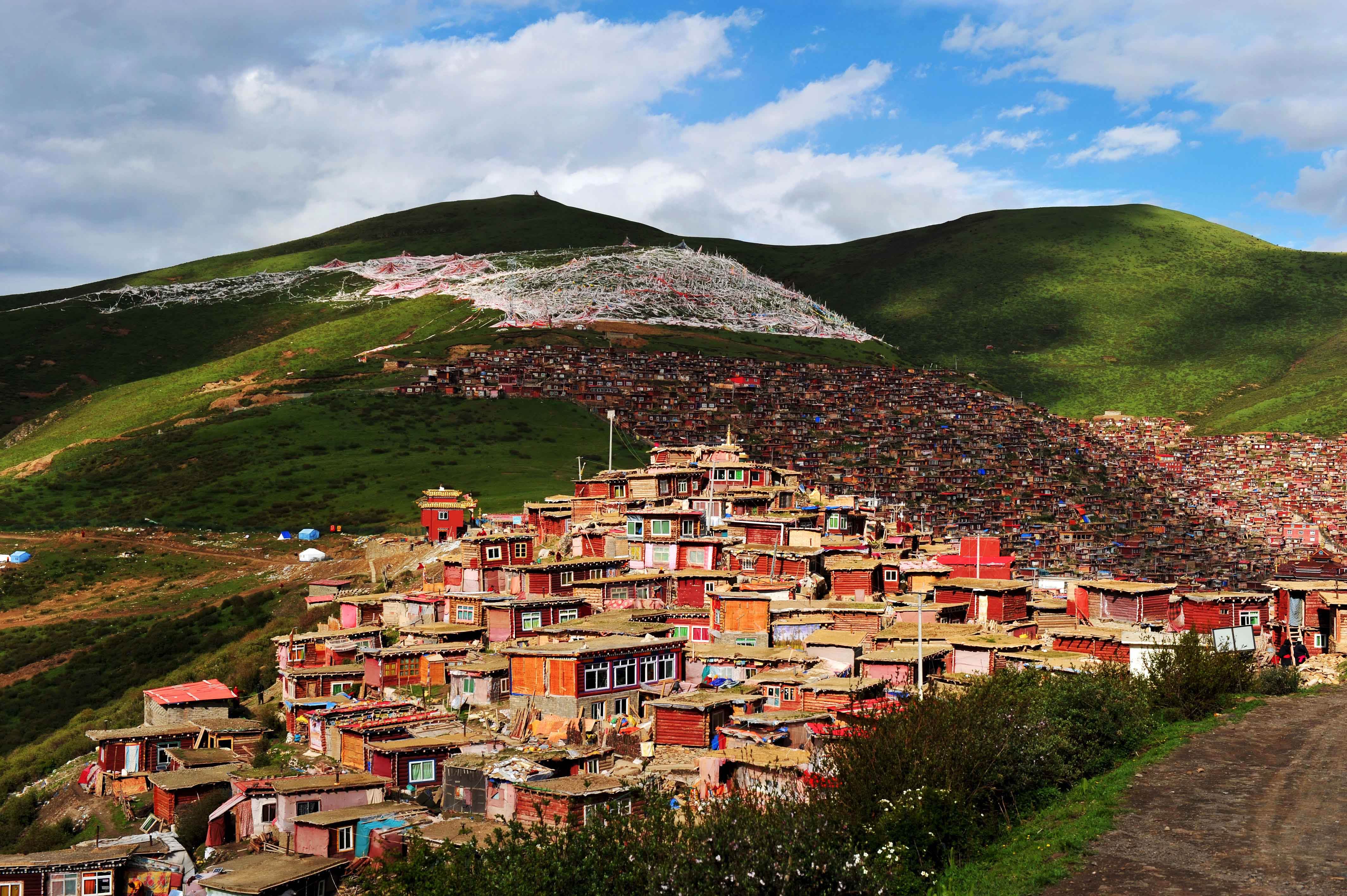
Top attractions: Danba Tibetan villages, Mount Siguniang, Tagong Grassland, Yala Snow Mountain, Xinduqiao, Daocheng / Yading Nature Reserve, Yarchen Gar (Archen Monastery), Hailuogou Glacier Park and Dagu Glacier Park, Jiuzhaigou National Park.
2) Tibetan area of Yunnan
The Tibetan area of Yunnan mainly refers to the Diqing Tibetan Autonomous Prefecture, located in the northwest of Yunnan Province. It is situated at the junction of northern Yunnan, the eastern Tibet Autonomous Region (T.A.R.), and the southwest of Sichuan. Diqing is part of the historical Tibetan region of Kham and is one of the eight autonomous prefectures in Yunnan Province.
The capital of the prefecture is Shangri-La, a place often regarded as an earthly paradise. Here, visitors can enjoy stunning views of snow-capped mountains, majestic rivers, remarkable gorges, and authentic Tibetan villages. One notable attraction is the mountain of Karwa Karpo (Mount Meili), considered one of the holiest mountains in Tibetan culture.
Diqing is known for its lush forests, with a forest coverage rate of 73.95% and a forest greening rate of 78.91%. The region is often referred to as a forest kingdom. The local community deeply respects nature and holds the belief that everything in nature possesses spirits. As a result, they have a longstanding tradition of not cutting down trees that are bearing fruit, a rule that has been passed down through generations.
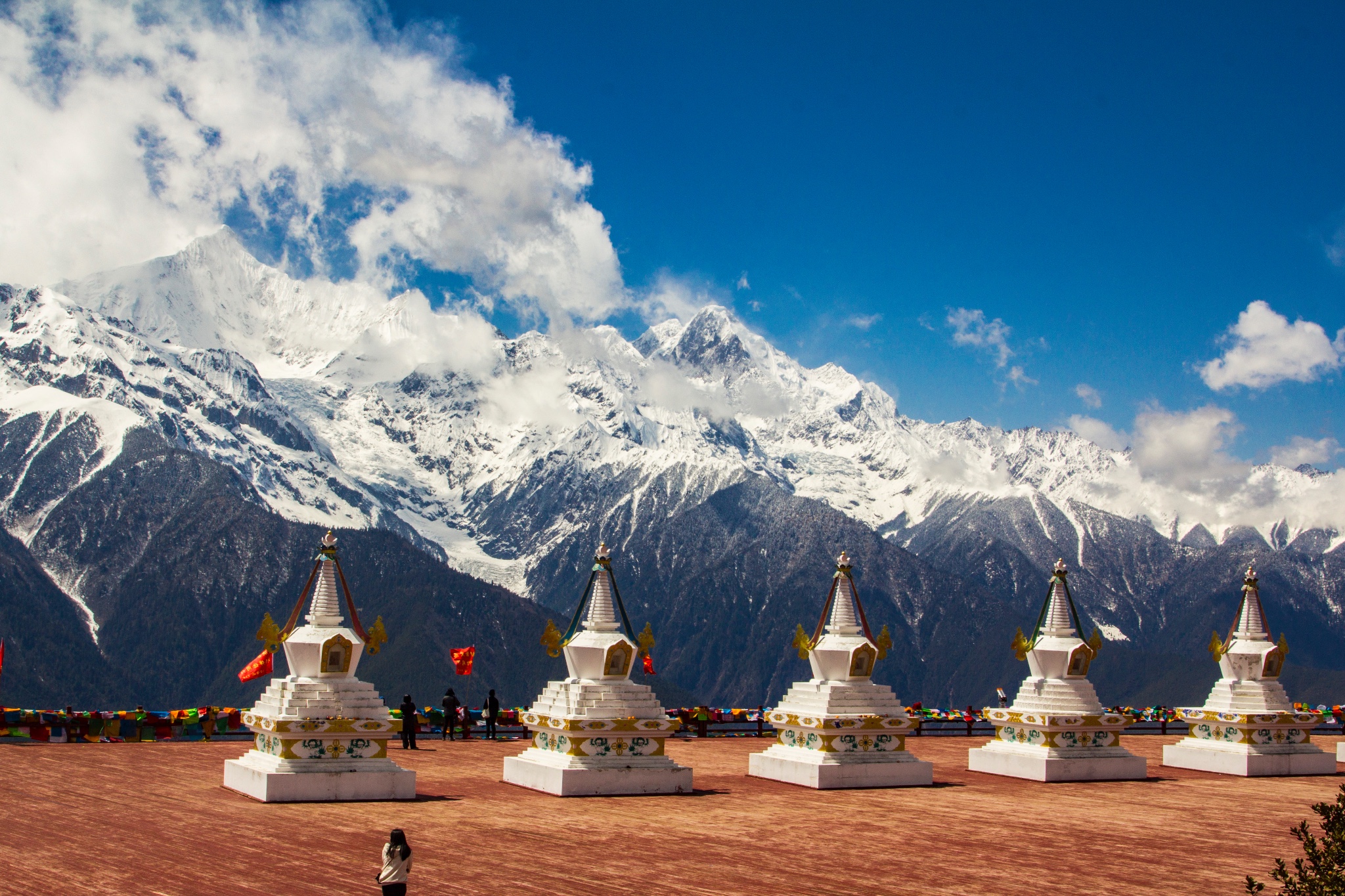
Top attractions: Tiger Leaping Gorge, Deqin Feilai Temple, Mount Meili, Baima Snow Mountain, Shangrila old town
3) Tibetan area of Gansu
The Tibetan area of Gansu primarily refers to the Gannan Tibetan Autonomous Prefecture. It is situated in the southwestern part of Gansu Province, China. The prefecture shares its northeastern border with the Aba & Qiang Prefecture of Sichuan Province, located on the edge of the Qinghai-Tibet Plateau. On its southwestern side, it borders Huangnan Prefecture and Golok Prefecture of Qinghai Province. It is a hidden jewel known as Gansu's 'back garden.' The region, where the Qinghai-Tibet and Loess Plateaus meet, showcases breathtaking landscapes of mountains, valleys, wetlands, and meadows. At an average altitude of 3,300 meters (10,800 feet), it's the lowest of the Tibetan autonomous prefectures, allowing visitors to appreciate Tibetan culture and landscapes with less risk of altitude sickness.
The Gannan Tibetan Autonomous Prefecture is home to 121 Tibetan Buddhist monasteries, including notable ones such as the Xiahe Labrang Monastery and Langmusi Sertri Monastery. These monasteries hold significant cultural and historical value and are recognized as national cultural relics. Best time to visit Gannan Tibetan Autonomous Prefecture is from June to August when temperatures range from 10-20°C, Gannan presents vibrant, colorful grasslands and a display of plateau's beauty. Key attractions include the spiritual Labrang Monastery, vast grasslands, the idyllic Tibetan village of Zhagana, and Lamusi Temple. Visitors can engage with local nomadic families, lose themselves in awe-inspiring landscapes on hiking expeditions in Langmusi or Zhagna, or experience thrilling horseback rides.
The local Tibetan community in this area has a belief that the human body is composed of four substances: soil, water, fire, and air. According to their beliefs, even after death, the body must transform into these four substances. As a result, their funeral customs are divided into four types: burial, water funeral, cremation, and sky burial.
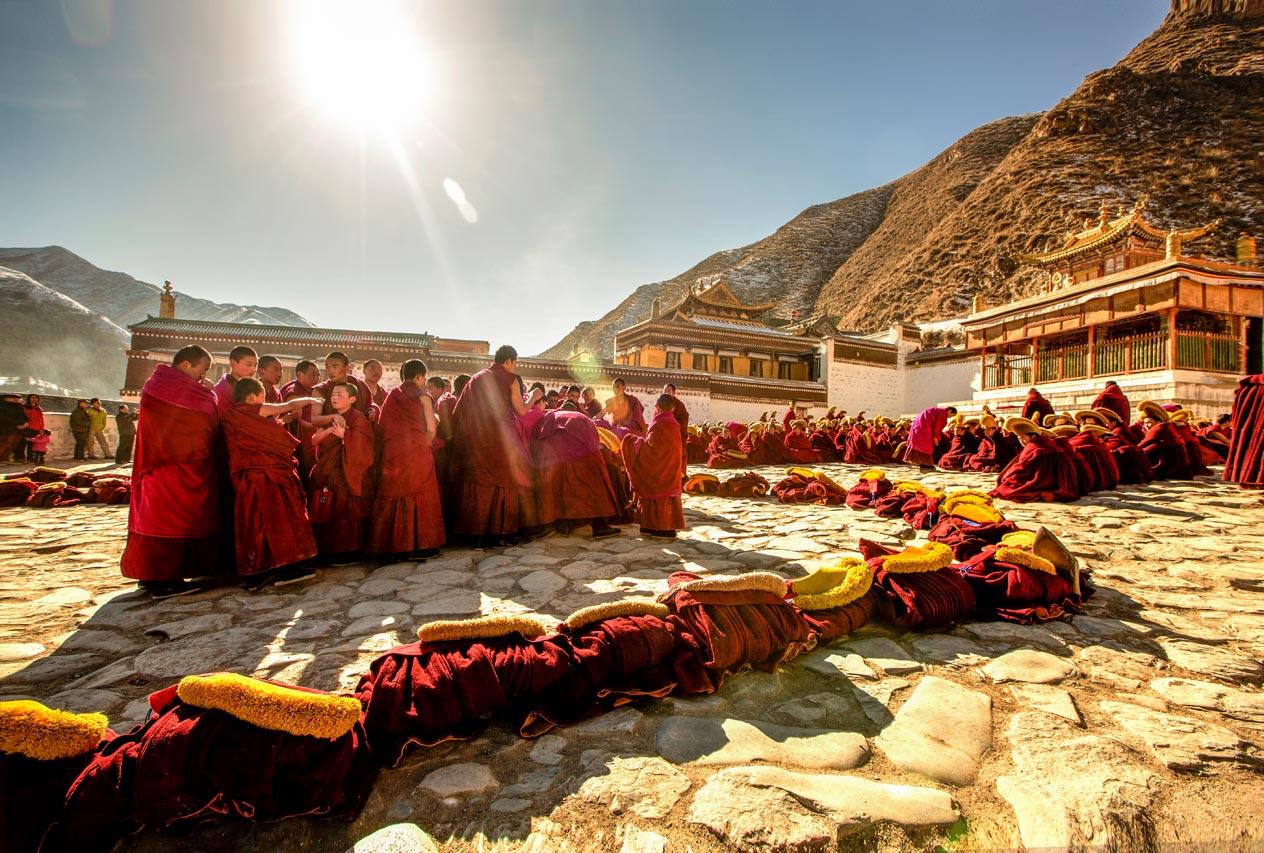
Top attractions: Labrang Temple, Langmu Temple, Zhagana, Sangke grassland
4) Tibetan area of Qinghai
The Tibetan area of Qinghai encompasses six out of the ten Tibetan autonomous prefectures in China. Xining serves as the capital city of Qinghai and is an ideal place for travelers to acclimatize to the high altitude for 1-2 days before heading to T.A.R. If you plan to take the Qinghai-Tibet train to Lhasa, Xining is the best choice as it not only offers a beautiful train journey through landscapes like the Kekexili Nature Reserve but also has more train options compared to other cities.
Yushu (Gyêgu) Tibetan Autonomous Prefecture is located in the southwest of Qinghai Province, at the source of the Three Rivers in the Qinghai-Tibet Plateau. It is known as "the source of rivers, the ancestors of famous mountains, the land of yaks, and the land of singing and dancing." The renowned Yushu Horse Racing Festival takes place annually from July 25 to August 1. During the festival, people dressed in vibrant traditional costumes gather on the Jiegu Prairie to participate in activities such as horse racing, yak racing, Tibetan wrestling, equestrian events, archery, shooting, ethnic song and dance performances, and Tibetan costume displays, all showcasing the unique cultural characteristics of the region.
Huangnan Tibetan Autonomous Prefecture is located in the southeast of Qinghai, at the first bend of the Yangtze River. It is renowned as the "hometown of Tibetan painting," and the exquisite artistic skills of Rebgong art play a significant role in Tibetan Buddhist art.
The Golog (Guoluo) Tibetan Autonomous Prefecture is situated in the southeast of Qinghai, bordering Gansu Province to the east and Sichuan Province to the south. It boasts numerous beautiful lakes and is home to the sacred Buddhist mountain, Mount Amne Machin.
Haibei Tibetan Autonomous Prefecture is located in the northeast of Qinghai Province, adjacent to Gansu Province in the north. Hainan Tibetan Autonomous Prefecture is situated to the south of the famous Qinghai Lake, while Haixi Mongolia Tibetan Autonomous Prefecture is located to the west of Qinghai Lake.
Top attractions/Things to do: Caka Salt Lake, Qinghai Lake, Kumbum Monastery / Yushu Horse Racing Festival, and Hiking at Mount Amne Machin
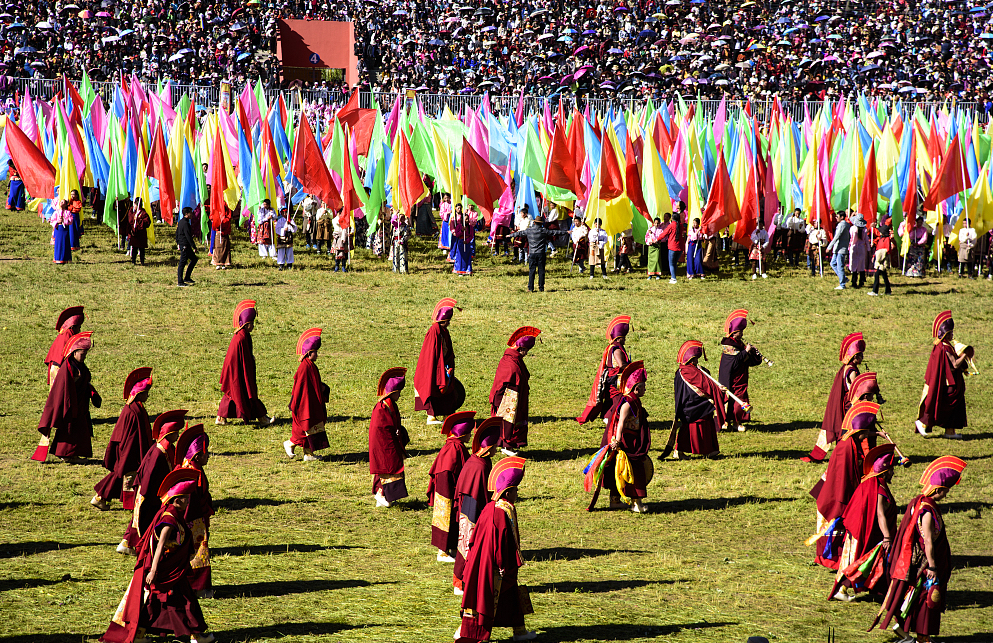
3. Traditional and Historical Tibet Area
In a traditional and historical context, the greater Tibet cultural area comprises three main regions: Ü-Tsang (Central Tibet), Amdo, and Kham. These divisions are based on the three major dialects spoken in these areas. There is a saying within the Tibetan community that highlights the distinct characteristics of each region: the best horses are in Amdo, the most beautiful people are in Kham, and the most prosperous Buddhism can be found in Ü-Tsang.
The cultural distinctions among these regions can also be observed in their traditional clothing styles. Ü-Tsang Tibetan clothing is known for its elegance and luxury. Amdo Tibetans, influenced by the Mongolian nomadic culture, tend to wear simpler and darker attire with fewer accessories. In contrast, Kham Tibetan people are known for their vibrant and richly adorned clothing. They have a preference for bright colors and incorporate a variety of accessories into their outfits.
1) Ü-Tsang
Ü-Tsang, also known as Central Tibet, refers to the current central and western parts of the Tibetan Autonomous Region(T.A.R.). It has played a significant role in Tibet's history and is considered the cultural heartland of Tibet, serving as the starting point of Tibetan civilization. Ü-Tsang is home to notable historical sites such as the first Buddhist temple, Samye Monastery, and the first palace, Yumbu Lakang Palace.
The dialects spoken in Ü-Tsang are relatively consistent, and the region has exhibited greater unity in politics, military affairs, culture, and economy. It has long been recognized as the traditional core area of Tibet and was formerly known as the headquarters of Tibet.
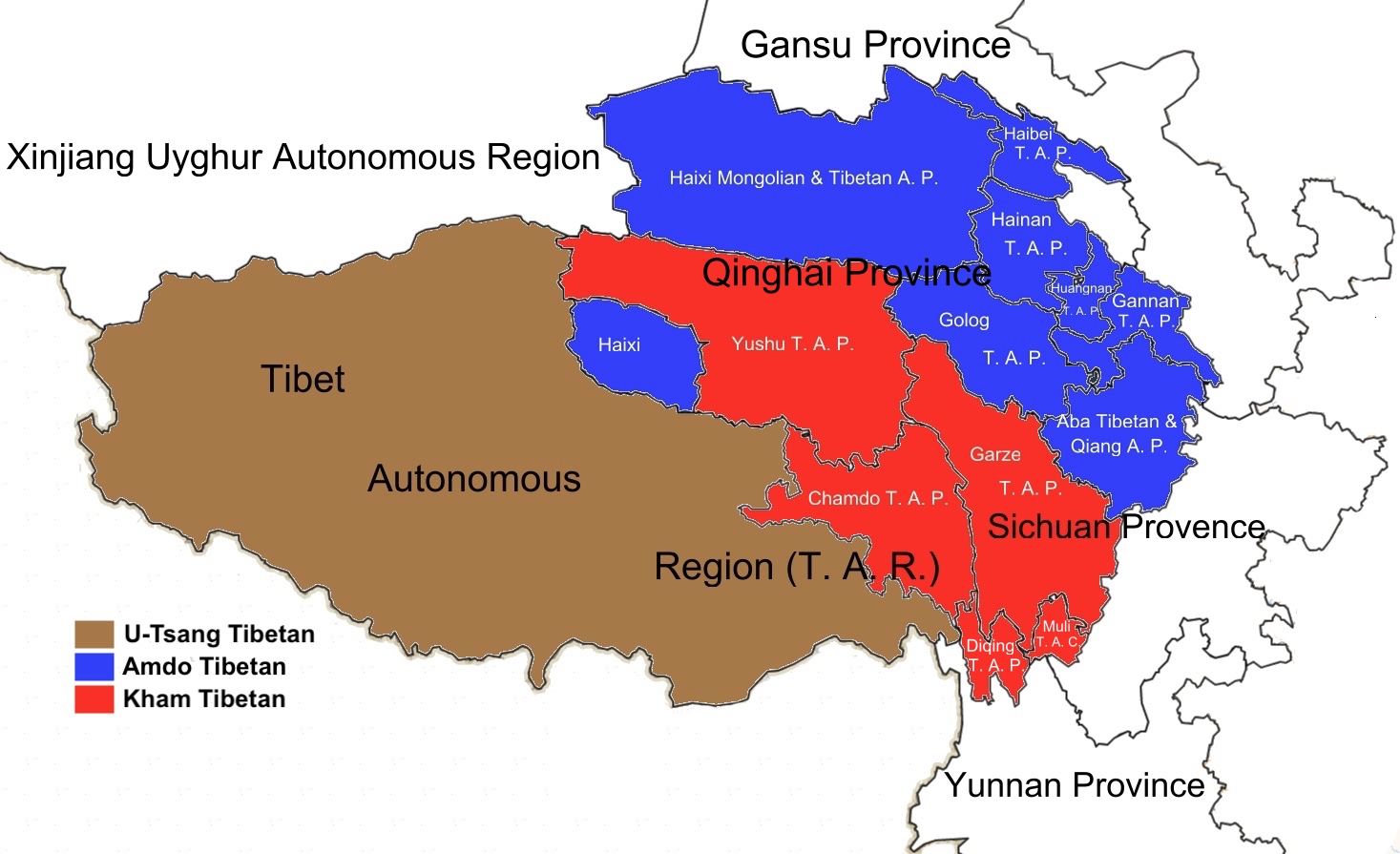
2) Amdo
The Amdo Tibetan area is situated in the northeast of the Qinghai-Tibet Plateau. It is known for being the birthplace of many prominent figures in Tibetan history and culture. Amdo has been the homeland of renowned academic masters, monks, and spiritual leaders. Notable personalities from this region include Tsongkhapa, Gendün Chöphel, the 10th Panchen Lama - Choekyi Gyaltsen, and the 14th Dalai Lama - Tenzin Gyatso.
Amdo boasts vast and picturesque prairies, making it home to some of the most beautiful grasslands in Tibet. These grasslands provide essential living space for Tibetan nomads and give rise to a rich nomadic culture. Amdo is especially renowned for its horses, which are considered the finest in all of Tibet.
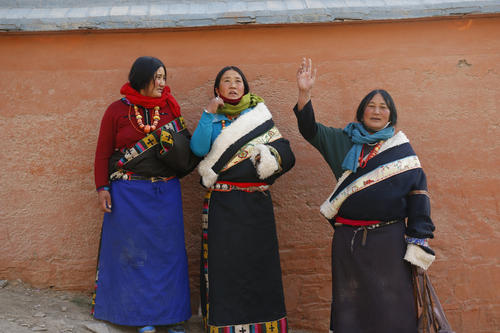
3) Kham
The Kham Tibetan area is situated in the northwest of Sichuan Province, north of Yunnan Province, eastern Tibet Autonomous Region (T.A.R.), and south of Qinghai Province. It is a region characterized by its location amidst the mountains and rivers of the Hengduan Mountains. The challenging natural environment has not only shaped the resilient and courageous character of the Kham people but has also influenced their traditions and customs, leading them to engage in business ventures. As a result, many Tibetan businessmen originate from Kham.
Kham is renowned for its distinctive Khampa culture, which showcases the unique traditions and practices of the Kham people. It is also home to notable Buddhist institutes, where religious teachings and practices hold great significance. Additionally, Kham boasts remarkable geographical diversity, encompassing varied landscapes such as mountains, rivers, and valleys.
The Kham people are known for their unwavering faith and devotion, exemplifying a deeply rooted religious and spiritual connection. This piety is an integral aspect of Kham's cultural fabric.
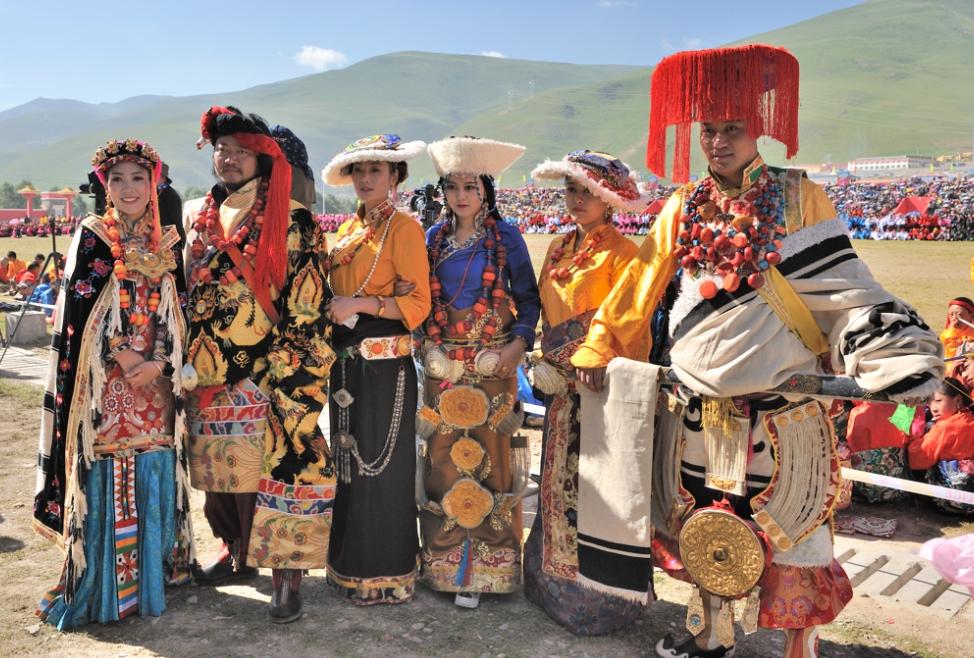
Related tours
4. Travel Regulation Difference
When traveling to the Tibet Autonomous Region (T.A.R), it is required for all foreign and Taiwanese travelers to obtain a Tibet Travel Permit (TTB). WindhorseTour can assist in organizing the necessary permits by utilizing scanned copies of the travelers' valid passport data page and China visa page. It is recommended to apply for these permits approximately 20-30 days in advance. The TTB Permit serves as an entry permit for boarding flights or trains to Lhasa or for crossing the borders of T.A.R via overland trips. For more detailed information, you can refer to WindhorseTour's Tibet Permit page.
On the other hand, when visiting the Tibetan areas in Sichuan, Yunnan, Gansu, and Qinghai, there is no requirement for a special travel permit. These regions can be visited with a regular and valid Chinese visa. However, it's worth noting that certain places within these areas, such as Sertar Larung Gar and Yarchen Gar, may have restrictions or closures in place.
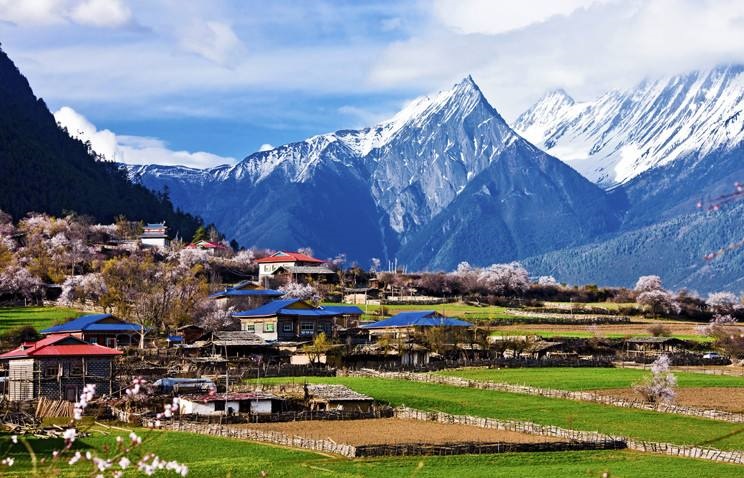
5. Best Time to Travel to Different Tibetan Areas
December to February: It is a great time to visit Lhasa and its surrounding areas, especially to witness the devout Tibetan Buddhist practices. However, other Tibetan regions may experience extreme cold during winter. Exceptions include Hailuogou Glacier Park in Garzê Tibetan prefecture and Dagu Glacier Park in Aba Tibetan prefecture.
March to April: Spring brings beautiful blooming flowers in places like Danba and Jinchuan Valley in Garzê Tibetan prefecture. Nyingchi in eastern T.A.R is known for its thousands of blooming peach trees, creating picturesque scenery. April is also considered one of the best times to see the true face of Mount Everest.
May to June: This period is recommended for treks due to mild weather conditions. Late April to early June or September to early October are ideal for visiting Mount Kailash. The Saga Dawa Festival, held between May and June (on the 15th day of the 4th month according to the Tibetan calendar), is a unique cultural experience. Shangri-La in Diqing Tibetan Prefecture offers stunning alpine lake views, lush greenery in Lulang Forest, and beautiful sights of Mount Namche Barwa in the Nyingchi area of Eastern T.A.R.
July to August: These months are generally suitable for visiting most parts of Tibet except for the highway between Bayi town and Ranwu in eastern T.A.R, which experiences monsoon season. Horse racing festivals take place in Yushu Tibetan Prefecture, Litang in Garzê Tibetan Prefecture, and Nagchu in T.A.R. Qinghai Lake (with rape flower blossoms), Labrang Temple (during the prayer festival), and Langmusi Sertri Monastery are worth visiting. The Shoton Festival, the biggest festival, occurs in August or early September (on the 30th day of the 6th month according to the Tibetan calendar).
September to November: September is regarded as the best time to visit Tibet, including Mount Everest Base Camp, offering excellent weather and visibility. October is considered the "golden season" with stunning autumn views in Jiuzhaigou and Yading Nature Reserve, covering the entire western Sichuan from late September to early November.
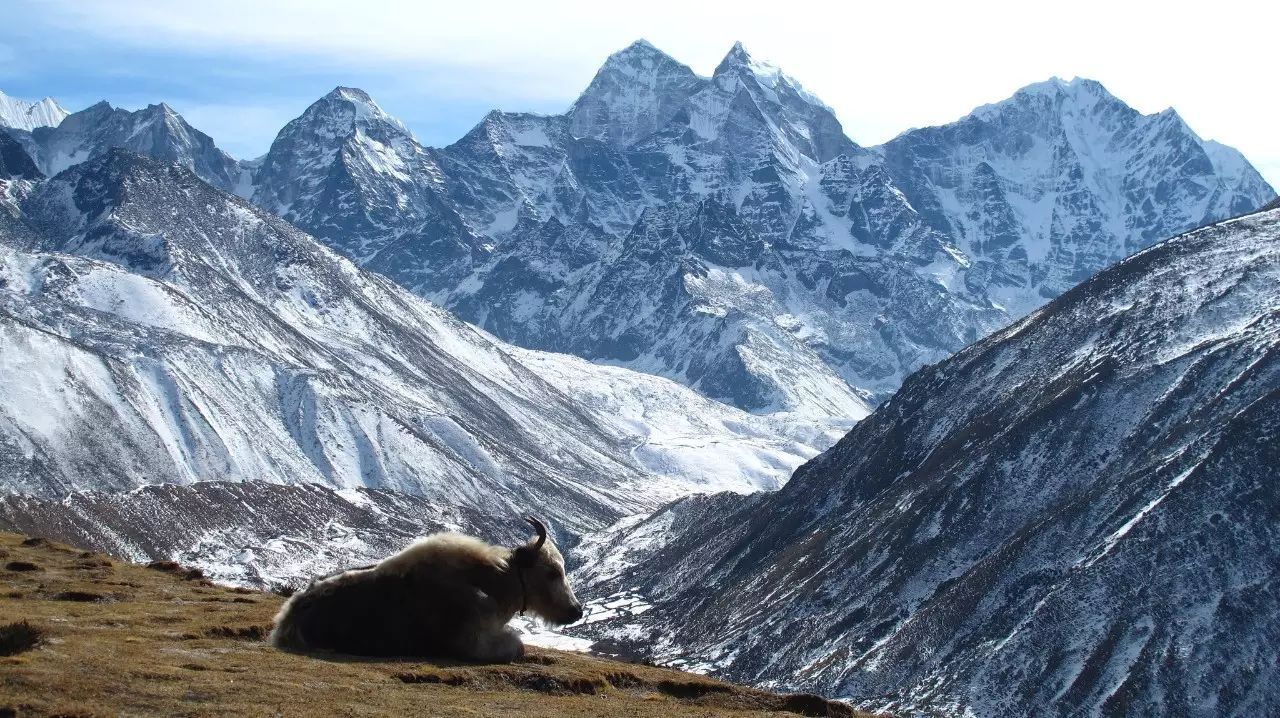
6. FAQs (Frequently Asked Questions)
- Can I visit Tibetan areas outside the Tibet Autonomous Region without a Tibet Travel Permit?
- Yes, most Tibetan areas outside the TAR do not require a separate permit. However, it is advisable to check the specific travel regulations for your chosen destination.
- Are there any language barriers when traveling in Tibet?
- English may not be widely spoken in remote areas. It is helpful to learn a few basic Tibetan phrases or have your local guide who can assist with translation when in T.A.R..
- What is the best time to visit Tibet?
- The best time to visit Tibet is during the spring and autumn seasons (April to May and September to October) when the weather is relatively mild and stable.
- Are there any health concerns related to traveling to high altitudes in Tibet?
- Travelers should be aware of the risks associated with high altitudes. It is recommended to acclimatize properly, stay hydrated, and consult with a healthcare professional before traveling to Tibet.
- Can I travel independently in Tibet or do I need to join a guided tour?
- Travel to the TAR requires joining a guided tour organized by a registered tour operator. For Tibetan areas outside the TAR, independent travel is possible, but it is still advisable to seek local advice and assistance.
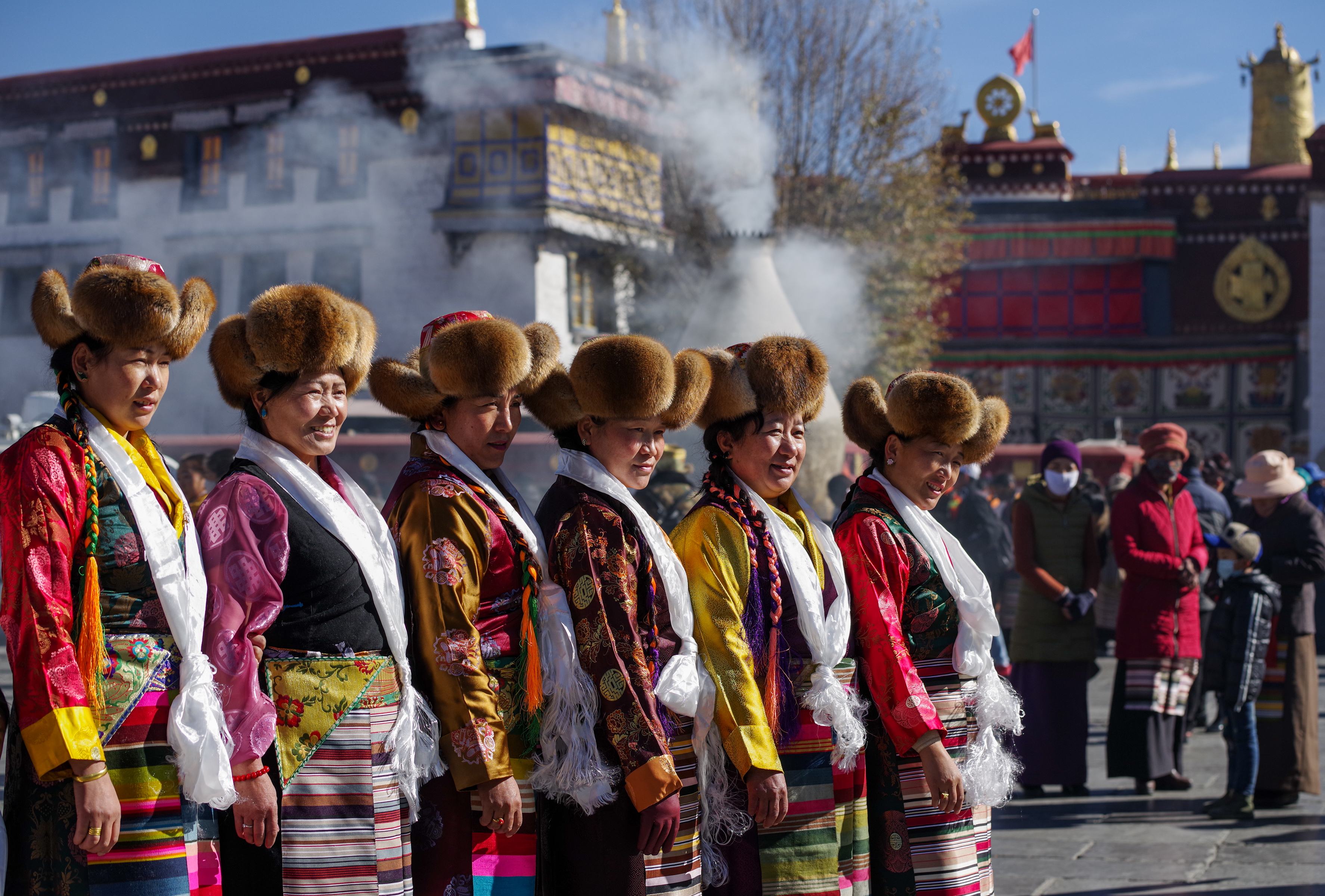
In conclusion, the Tibetan people consider Tibet to encompass a larger area beyond the Tibet Autonomous Region. Exploring both the TAR and Tibetan areas outside the region allows you to witness the unique blend of natural beauty and cultural heritage that Tibet offers. Whether you choose to visit the iconic sites in the TAR or venture into the lesser-known Tibetan areas, your journey will be filled with enchanting experiences and unforgettable memories.

